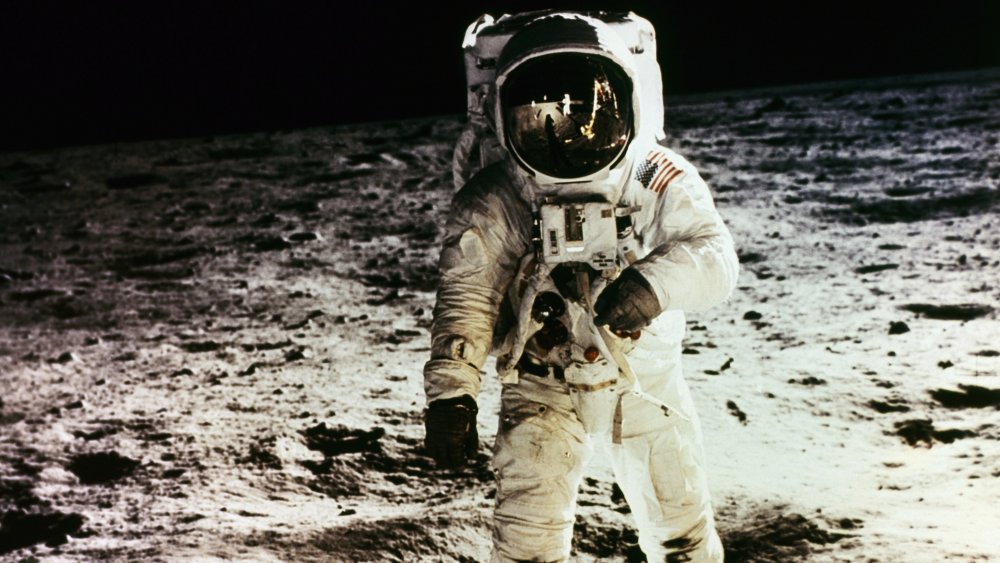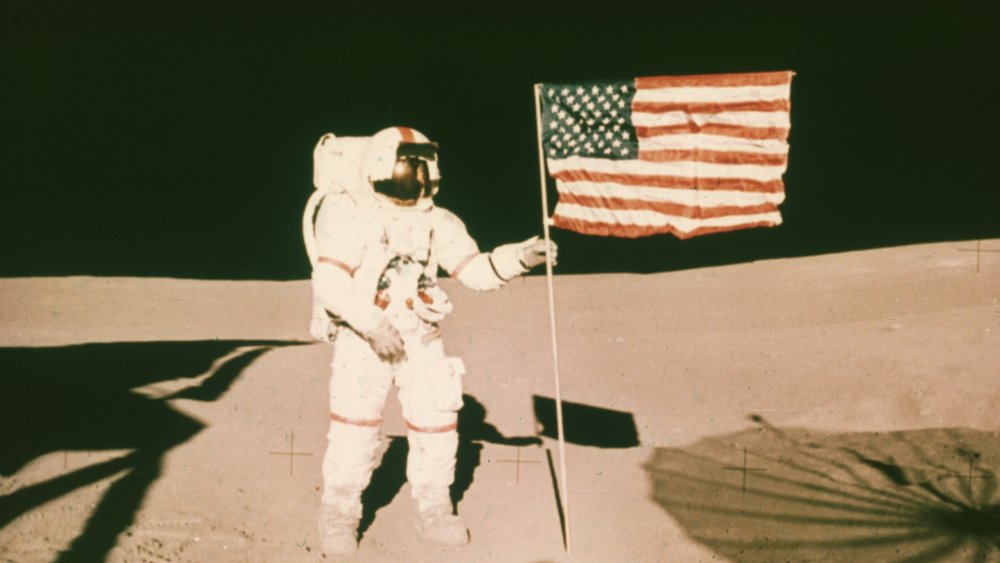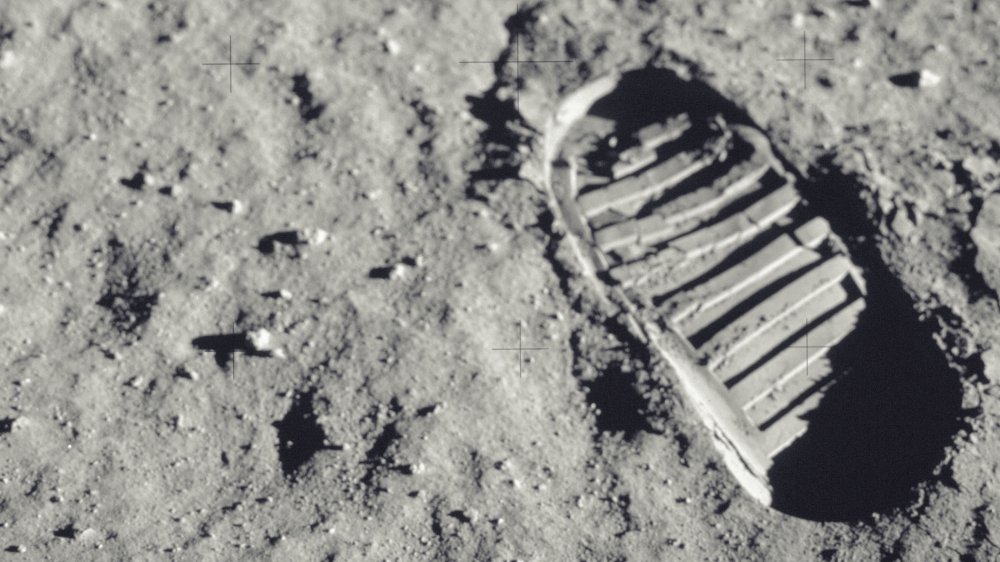Who Are The Men Who Have Walked On The Moon?
We walked on the moon for the first time in 1969, and since then there's been a rarefied group of 12 people who've set foot on our planetary satellite. The United States no longer sends people to the moon on missions, so group remains small. (And no, there's no evidence we faked the moon landing.)
The last time a person walked there was in 1972. What happened to the people who left their footprints in history? As The Atlantic wrote in 2019, only four of them survive, leaving us with less of their first-hand experience from which to draw.
The first man to walk on the moon was Neil Armstrong, with the words, "one small step for man, one giant leap for mankind." Armstrong was a Navy pilot and engineer before the Apollo 11 mission. Despite leaving the Navy in 1952, he remained in the Naval Reserve, allowing him to act as an experimental test pilot for NASA's predecessor, explained Mental Floss. After returning from the moon, Armstrong retired from NASA in 1971 and became a professor of aerospace engineering at the University of Cincinnati. Armstrong was famously private and rarely signed autographs. He died in 2012.
Buzz Aldrin was with Armstrong and followed him to the lunar surface that historic day. Aldrin, too, was a military man — a pilot. He retired in 1972. NBC reported that the still spry Aldrin was medically evacuated from the South Pole in 2016.
Golf on the moon
After the historic Apollo 11 mission, NASA quickly worked on getting more men to the moon. Apollo 12 astronauts Charles "Pete" Conrad and Alan Bean became the third and fourth men to walk on the moon. Conrad and Bean almost didn't make it to the moon when a lighting storm occurred as Apollo 12 was getting ready to launch. Conrad retired from NASA in 1973 and worked for an aerospace company. Sadly, he died in a motorcycle accident in 1999. Bean was not only an engineer but also an artist, the only artist (so far) to have traveled to outer space. He served as a NASA trainer until 1981, before deciding to devote his life to art. Bean died in 2018.
Apollo 13 astronauts were supposed to land on the moon too, but mechanical issues left them orbiting it instead. Apollo 14 made it. Alan Shepard, the first American launched into space, became the fifth man on the moon. Shepard is also the first person to play golf outside of Earth; he hit a few balls on the moon. Shepard died in 1988.
With Shepard was Edgar Mitchell, a test pilot for the Navy before NASA recruited him. He retired in 1972 and then (perhaps surprisingly) devoted his life to proving the existence of aliens, per NBC. He died in 2016 on the eve of the anniversary of his moon landing.
Astronaut and climate change denier
David Scott and James Irwin of Apollo 17, both Air Force pilots, reached the moon in 1971. According to Mental Floss, Scott became the first person disciplined by NASA for bringing unauthorized items with him — stamps — with the intent to sell them after. It caused controversy back on Earth. He is a consultant for films about space. He's now 87 years old.
Irwin experienced heart problems while on the moon, but NASA felt being in the module replicated an ICU, so it was the best place for him. His heart rate returned to normal back on Earth, but he suffered a heart attack months after. Irwin survived and set up a church called High Flight Foundation. He died from a heart attack in 1991.
The last four people to walk the moon are John Watts Young, Charles M. Duke, Eugene Cernan, and Harrison H. Schmitt. Young was the longest-serving astronaut, with six space missions, including the space shuttle. He retired from NASA in 2004 and died in 2018.
Duke is the youngest man to walk the moon. He was in the command center in Houston during the Apollo 11 mission. After retiring from NASA, Duke started an investment firm. Schmitt is the only geologist to go to the moon, served as a New Mexico senator, and doesn't believe in climate change (per Discover Magazine). Cernan, who died in 2017, founded an aerospace company and testified before the Senate on the space program's future.


